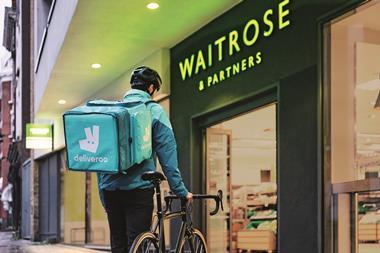Once upon a time, a fragile independent grocery sector consistently failed to hit the heights when it came to projecting its potential to the shopping world at large. But then things began to change.
A few years ago a far-sighted group gathered on the south coast to plot what ultimately blossomed as the Association of Convenience Stores. This brought a refreshing, more united voice to spread the c-store gospel against the savvy, well oiled publicity machines of the superstores, while throwing a lifeline to independents.
Even on the parliamentary lobby front, the ACS has been successfully attracting the attention of Whitehall mandarins who previously believed that UK grocery began and ended at the 24th checkout at their local Tesco, or at the deli counter in Harrods Food Hall.
But as the c-store sector has battled against the might of the multiples, so several authoritative research groups have helped its members take a critical look at themselves. Take Harris International Marketing, whose Convenience Tracking Programme (CTP) has become essential reading inside and outside of the business.
Its latest survey confirms what many have suspected c-store operators have gone back to basics, are getting their houses in order and are attracting more shoppers. In truth, given that the survey showed that half the British population visits a c-store or forecourt shop in a typical week and the percentage is rising this is probably the best news to hit the sector in years.
But while convenience retailing is looking much healthier, its participants would do well to heed the words of the CTP survey: move up a gear and convert the many extra opportunities into hard sales. For, in the recent words of a well-known US convenience pioneer: "The retailing world ain't gonna get any easier." And that statement applies just as much in downtown Bolton as it does amid the all-night delis in the Bronx.
Having said all that, Britain's c-store operators should allow themselves a few satisfied smiles this week.
{{OPINION }}
Close menu
- Home
- Retail & Wholesale
-
Products & Suppliers
- Back to parent navigation item
- Products & Suppliers
-
Product Categories:
- Back to parent navigation item
- Product Categories:
- Alcoholic drinks
- Bakery
- Cereals & breakfast
- Cheese
- Chicken & poultry
- Chocolate
- Confectionery
- Crisps, nuts & snacks
- Dairy
- Fish
- Fresh produce
- Frozen
- Household
- Meat
- Own Label
- Sauces & condiments
- Seasonal
- Soft drinks
- Vaping
- Vegan & plant-based
- World foods
- Suppliers
- People
- Reports & Data
-
Topics A-Z
- Back to parent navigation item
- Topics A-Z
-
Popular topics:
- Back to parent navigation item
- Popular topics:
- Cost of living crisis
- Crime
- Deposit Return Schemes
- Finance
- Government & Regulation
- Health
- Inflation
- Loyalty
- Marketing
- Mergers & Acquisitions
- New Product Development
- Sourcing
- Supply chain
- Sustainability & environment
- Technology
- Ultra Processed Foods
- Vaping
- A-Z all topics
- Content by type:
- Events
- Ask iA (beta)
- Subscribe now
Sign in to comment on this article
Not logged in before? Register for FREE guest access today.
You will be able to:
- Read more stories
- Receive daily newsletters
- Comment on stories
Advert















No comments yet